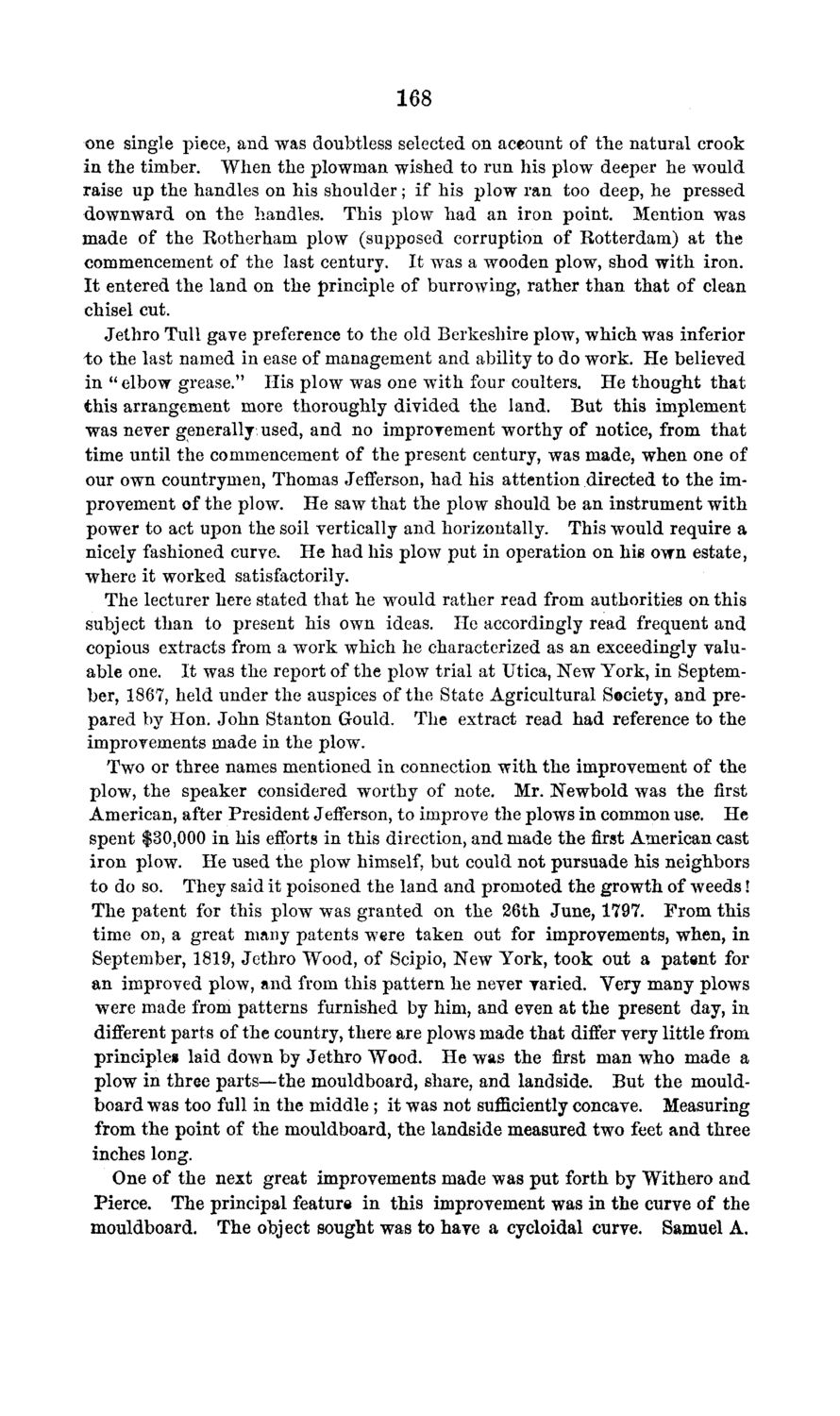| |
| |
Caption: Board of Trustees Minutes - 1869
This is a reduced-resolution page image for fast online browsing.

EXTRACTED TEXT FROM PAGE:
168 one single piece, and was doubtless selected on account of the natural crook in the timber. When the plowman wished to run his plow deeper he would raise up the handles on his shoulder; if his plow ran too deep, he pressed downward on the handles. This plow had an iron point. Mention was made of the Rotherham plow (supposed corruption of Rotterdam) at the commencement of the last century. It was a wooden plow, shod with iron. It entered the land on the principle of burrowing, rather than that of clean chisel cut. Jethro Tull gave preference to the old Berkeshire plow, which was inferior to the last named in ease of management and ability to do work. He believed in " elbow grease." His plow was one with four coulters. He thought that this arrangement more thoroughly divided the land. But this implement was never generally used, and no improvement worthy of notice, from that time until the commencement of the present century, was made, when one of our own countrymen, Thomas Jefferson, had his attention directed to the improvement of the plow. He saw that the plow should be an instrument with power to act upon the soil vertically and horizontally. This would require a nicely fashioned curve. He had his plow put in operation on his own estate, where it worked satisfactorily. The lecturer here stated that he would rather read from authorities on this subject than to present his own ideas. He accordingly read frequent and copious extracts from a work which he characterized as an exceedingly valuable one. It was the report of the plow trial at Utica, New York, in September, 1867, held under the auspices of the State Agricultural Society, and prepared by Hon. John Stanton Gould. The extract read had reference to the improvements made in the plow. Two or three names mentioned in connection with the improvement of the plow, the speaker considered worthy of note. Mr. Newbold was the first American, after President Jefferson, to improve the plows in common use. He spent $30,000 in his efforts in this direction, and made the first American cast iron plow. He used the plow himself, but could not pursuade his neighbors to do so. They said it poisoned the land and promoted the growth of wTeeds! The patent for this plow w^as granted on the 26th June, 1797. From this time on, a great many patents were taken out for improvements, when, in September, 1819, Jethro Wood, of Scipio, New York, took out a patent for an improved plow, and from this pattern he never varied. Very many plows were made from patterns furnished by him, and even at the present day, in different parts of the country, there are plows made that differ very little from principles laid down by Jethro Wood. He was the first man who made a plow in three parts—the mouldboard, share, and landside. But the mouldboard was too full in the middle ; it was not sufficiently concave. Measuring from the point of the mouldboard, the landside measured two feet and three inches long. One of the next great improvements made was put forth by Withero and Pierce. The principal feature in this improvement was in the curve of the mouldboard. The object sought was to have a cycloidal curve. Samuel A.
| |